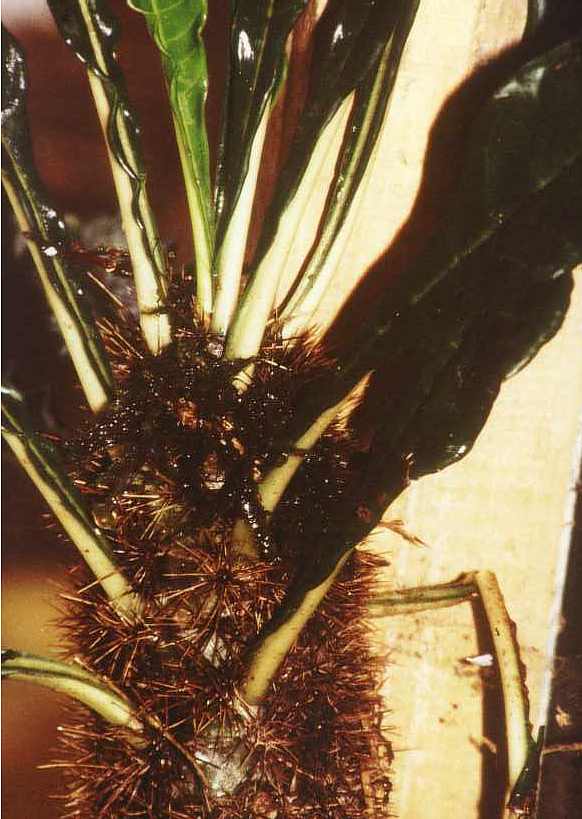

| Genus/Species: | |
| Common Name: | Antplant |
| Family/Subfamily: | Rubiaceae: Myrmecodinae |
| Order: | |
| Origin: | Kuper Range/M.P. |
| Location: | |
| Remarks: | An outstanding example for the close relationship between ants and their respective antplants are ants of the genus Dolichoderus. They live in domatia inside the tuber of about 80 different species of epiphytic antplants of the genus Myrmecodinae belonging to the family Rubiaceae. Antplant can be found on New Guinea island. There are a number of advantages of this close relationship between ants and their respective antplants. The antplants provide shelter and protection for the ants. Many antplants release an unpleasant smell of butyric acid that might deter birds and other animals from probing for ants inside the antplant. Ants in return, provide nutrients and play an important role for seed dispersal. Seeds of the antplants are collected by the ants and stored in special cavities of the antplant, until a suitable site for ‘planting’ is identified by the ants. Usually a mature tree is chosen to ensure that the bark doesn’t grow much more so that the cast off bark including the attached antplant doesn’t fall off. Apart from this, the ants keep the antplant free of weeds and other epiphytes and might defend their antplant against herbivores. Furthermore, the ants dispose of their debris like faeces, dead ants, etc. in ‘warty’ cavities of the antplant. The nutrients of the decaying debris are incorporated by the antplant. Antplants can be also inhabited by wild honey bees. |
go to main menu
go to abbreviations
© John W. Dobunaba & Michael F. Schneider, 1999